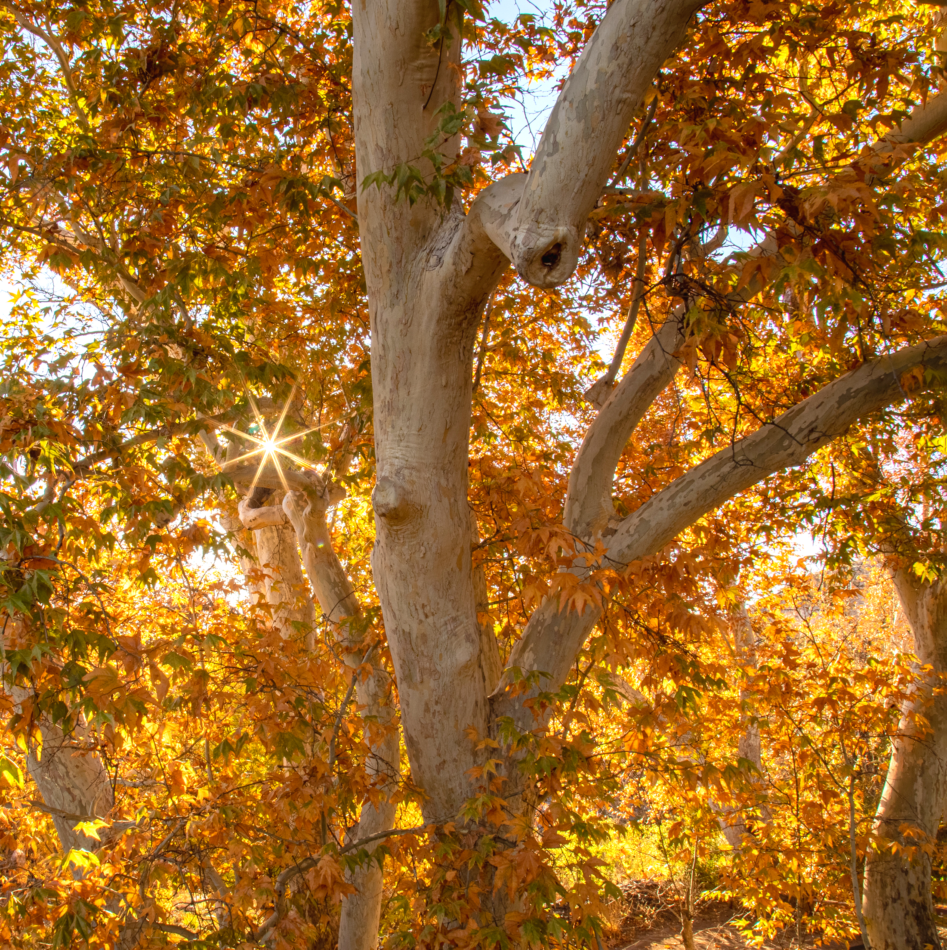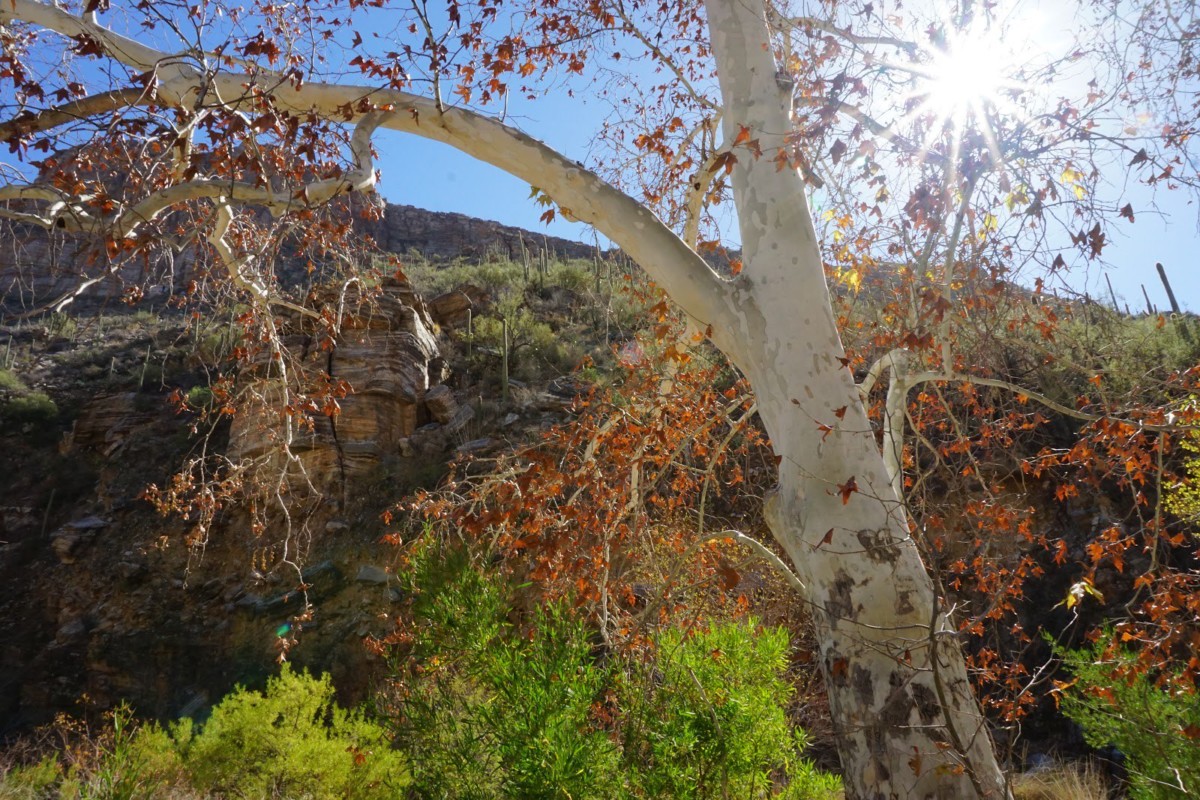Written by Aleidys Lopez Romero
 This week our flora feature is the Arizona sycamore (Platanus wrightii). While this species was named after American botanist Charles Wright (1811-1885), this tree’s family has been around as far back as the Cretaceous period when dinosaurs roamed the Earth.
This week our flora feature is the Arizona sycamore (Platanus wrightii). While this species was named after American botanist Charles Wright (1811-1885), this tree’s family has been around as far back as the Cretaceous period when dinosaurs roamed the Earth.
Sycamores can grow with impressive speed and stand more than 80 feet tall, with canopies spanning over 100 feet. If you’re in the Sky Island region, you may have walked past an Arizona sycamore on your way to school or work, as they’re often used as shade trees within cities.
Their white, peely bark makes them an easy species to identify. They’re also distinguishable by their large star-shaped leaves and red flowers that bloom in spring. They prefer wet soils, although they can only tolerate being inundated for about two weeks at a time — and thus they tend to be found along the sides of streams and wetlands. This makes them a great indicator species for our Spring Seeker project. Arizona sycamores are native to Arizona, New Mexico, and parts of northwestern Mexico and are usually found in riparian areas like canyons and mountains between 2,000-6,000 feet.
Unfortunately, although these trees can live to be hundreds of years old and are somewhat tolerant of urban conditions, they’re highly susceptible to insect damage and fungal diseases such as leaf spot disease and sycamore anthracnose. That’s why it’s vital that we protect these living fossils: Not only do they give us beauty and shade, but they also provide essential ecosystem services such as erosion control and breeding habitat for birds.
Sources


